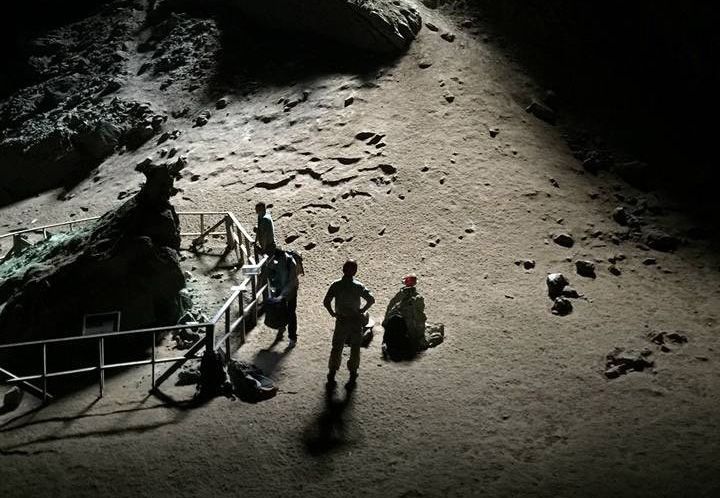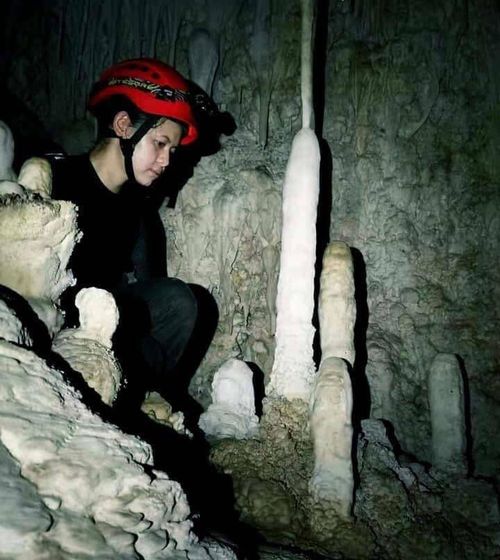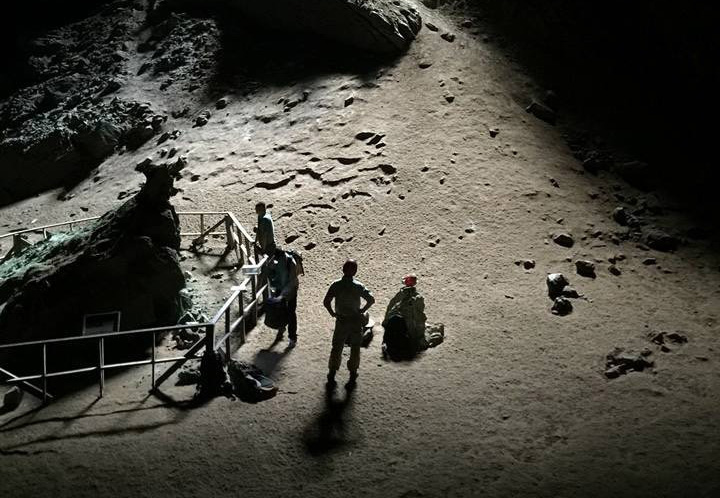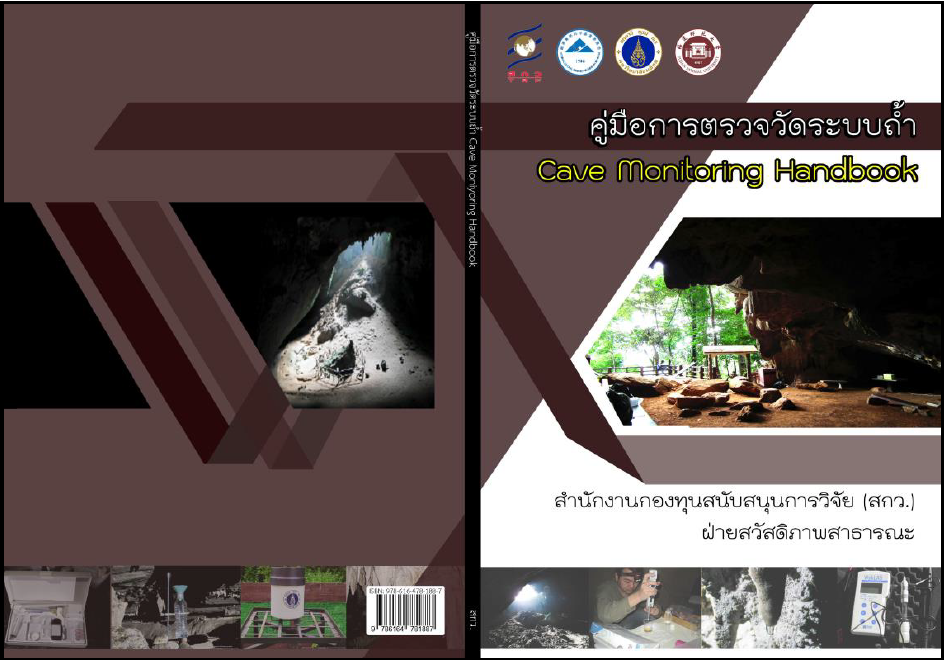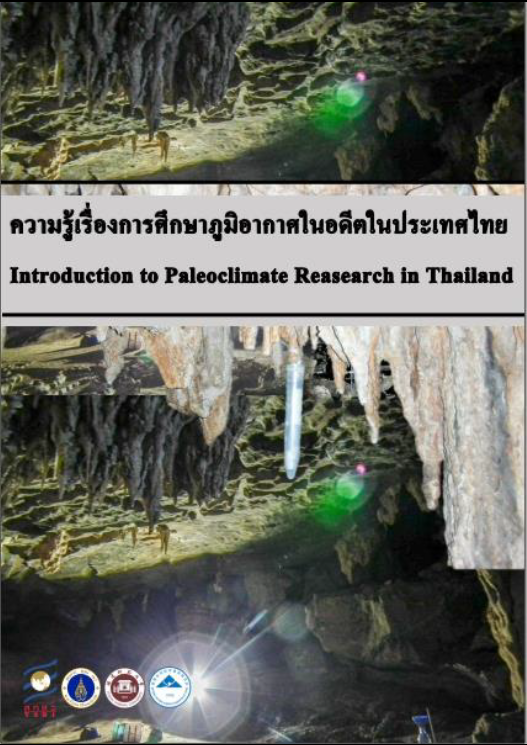Teak tree-ring and stalagmite can be compared to create climate line in the past up to 3 centuries, including showing the relationship with climate change from far away such as “Enzo” phenomenon.
Asian summer monsoon variability during the Holocene: a synthesis study on stalagmites and tree rings from Thailand and China
Asst. Prof. Chotika Muangsong, ecology and environment science lecturer of bachelor of Arts Program in Innovation for Social and Environmental Management in Amnatcharoen campus Mahidol university. She received the national research award (Annual budget 2022), good level research in Physical science and Mathematics by National Research Council of Thailand (NRCT) with “Asian summer monsoon variability during the Holocene: a synthesis study on stalagmites and tree rings from Thailand and China”. This research is funded by Thailand Science Research and Innovation (TSRI) and National Natural Science Foundation of China (NSFC)
This research is analysis stable isotope of Oxygen (δ18O) in 76 years old of teak log’s tree-ring to study the relation of δ18O and climate factors. Besides, to compare δ18O teak log’s tree-ring with stalagmites in same area. According to the research, natural evidences from both in this area can be very well compared and used to create climate lines in the past, including to show the relation of them with climate change in faraway area such as the Enzo phenomenon
Asst. Prof. Chotika Muangsong, head of research project with Assoc. Prof. Nathsuda Pumijumnong, lecturer in faculty of environment and resource, Mahidol university, expert in tree-ring studying in Thailand and Prof. Binggui Cai from China, expert in stalagmite studying and Supaporn Buajan, postdoctoral research fellow from Thailand surveyed tree-ring and stalagmite from Thailand and China together. They found the major important causes of climate change in the world. The studies have shown that…
- The width of tree-ring can be tracked back to thousands of years, with 1 tree-ring can shows the amount of rain fall in 1-year, high precipitation or drought
- “Oxygen Isotope” factor in tree-ring cellulose can be tracked back to monthly weather or seasonally
- The layer of stalagmite can be studied to track back tens of thousands of years. Which is in “Holocene” era (after the end of ice age of world history) but the result is so difficult because the stalagmite is a few and varies from area to area
China chose to study in Thailand because it is in the world with clearer season, therefore, can find clearer pattern of stalagmite’s ring and Thailand is located in the seam area between the monsoon on the Indian Ocean and the monsoon on Pacific Ocean. The climate data in Thailand is very important to understand overview natural system in the Asia monsoon. Tree-ring and stalagmite from Thailand are recognized that is as a high potential natural evidence for high resolution studying climate in the past.
The strength is research result can track precipitation back more than 3 centuries which is longer than using conventional automatic water meter that can only track back 1 century. Research result can be proved the accuracy of the climate model (Model verification). In additional, it also can important discover “Holocene” era of humankind. There is extensive study in other countries but Thailand is not, and still cannot provide high-resolution information back to the past, which climate change may change and collapse of humanity
According to the research, in the period early to middle-Holocence era (ten thousand years before the present world) have precipitation more than late-Holocence obviously. Drought war observed with human influence clearly involved in 18th century and sun’s ray and the phenomenon “Enzo” (variation of air in the southern hemisphere). Cleary affecting the variation of the Holocence summer monsoon.
In addition, researcher have entered caves in Mae Hong Sorn province and global geo park name “Phu Pha Phet cave” of UNESCO in Khao Banthat wildlife Sanctuary, Satun province. Both of them are compared with caves in Yunnan and Fujian province, China. That gives “cave system monitoring guide” can be used as guide to managing natural cave attractions.
And there is a joint research between the funding agencies within The Thailand Research Fund (TRF) about global geo park “Satun”. They try to develop tracking system and use data to manage the cave sustainability, prevent impacts from human and changes that will systematically affect the integrity of cave, to analyze factors are likely to affect to resources such as temperature, water and air, including risks points, hazards and sensitive areas to human and environment as well as suggestion for risk management from the development of database.
This research is a part of the Bachelor of Arts Program. In Innovation for Social and Environmental Management program, Amnatcharoen Campus, Mahidol, and is beneficial to Thai tourism, promote economy of community and country as well.
-
ม.มหิดล ร่วมกับ สกสว. และ NSFC สาธารณรัฐประชาชนจีน ลุยสำรวจวงปีไม้และหินงอก ปกป้องล่มสลายอารยธรรมมนุษย์ จากการเปลี่ยนแปลงสภาพภูมิอากาศ (Climate change)https://www.nstda.or.th/sci2pub/mahidol-nsfc-climate-change/➞
-
ผลงานวิจัยเด่น: ความผันแปรของลมมรสุมฤดูร้อนในทวีปเอเชียสมัยโฮโลซีน การศึกษาเพื่อสังเคราะห์ข้อมูลที่บันทึกในหินงอกและวงปีไม้จากประเทศไทยและจีนhttps://op.mahidol.ac.th/ra/2019/12/26/am_2562-01/➞
Supporting this research is a joint work of national and international academic networks. With the following network partners:
-
National Research Council of Thailand (NRCT), Cooperate in international research fund management, approval of foreign researchers licenses and facilitating the analysis of samples in foreign laboratories research
-
Department of national park, wildlife and plant conservation, Cooperation in management, facilitating, approval licenses to research in conversation areas
-
4 Wildlife sanctuary: Khao Banthat, San Pan Daen, Lum Nam Pai and Chiang Dao, Thailand : Cooperation in research personnel, facilitating sample and data collection, creating publication of research data dissemination
-
3 National parks: Than Bok Khorani, Mae Moei and Pha Hom Pok, Thailand : Cooperation in research personnel, facilitating sample and data collection, creating publication of research data dissemination
- School of Geographical Sciences, Fujian Normal University (FNU), China : Cooperation in research personnel, facilitating sample and data collection, creating publication of research data dissemination
- National Natural Science Foundation of China : Budget supporter Thai-Chinese research





